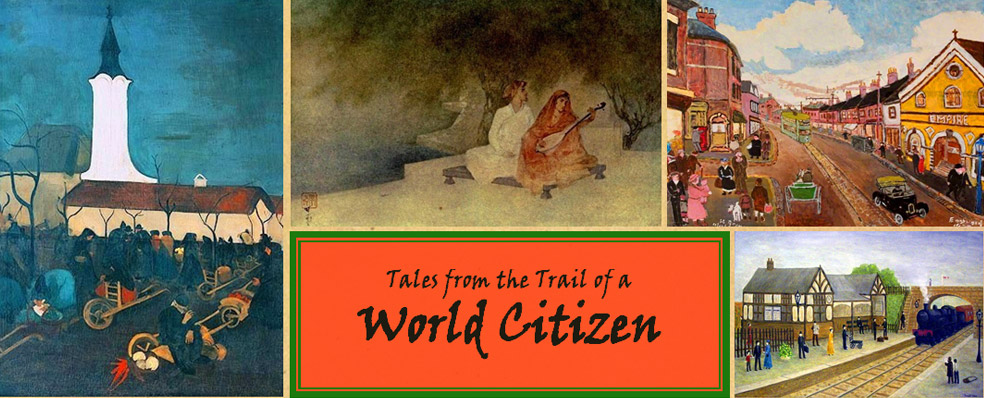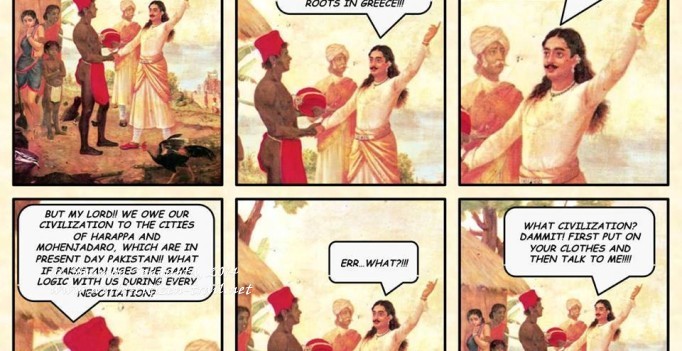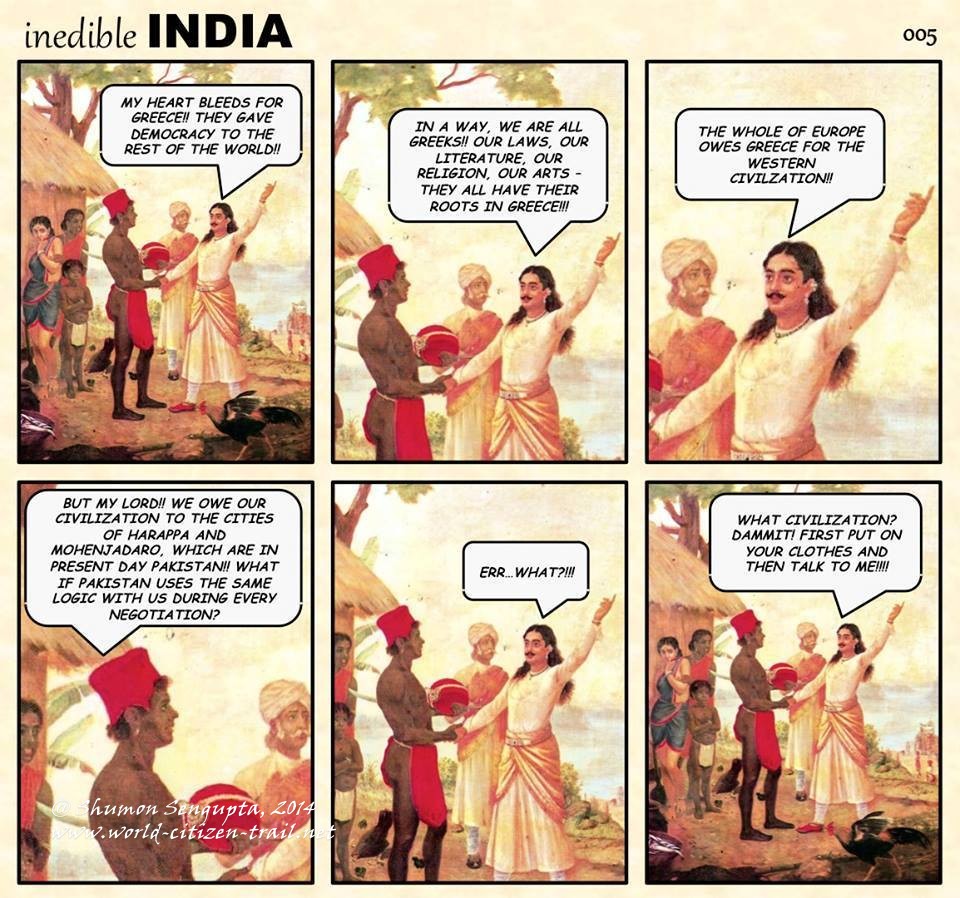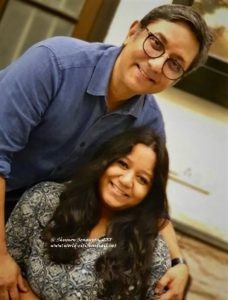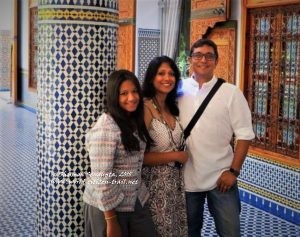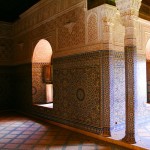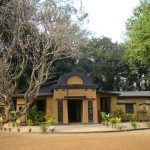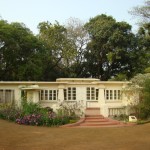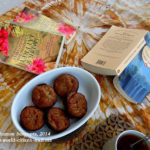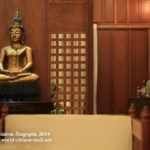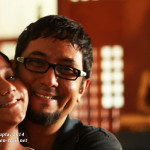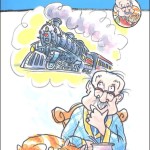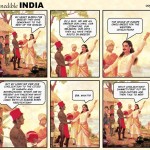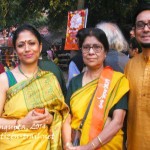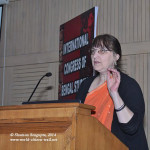A mental transformation:
Anything said about India is true, just as the exact opposite is also equally true. Just as we find extreme material ugliness in India, we encounter staggering material beauty co-existing side by side.
What has always intrigued me about my country is that people who are capable of creating and appreciating such profound works of beauty, be it in our visual arts (sculpture and painting), performing arts (music, dance, theater, film), literature, architecture, handicrafts, textiles etc, are the very same people who are also equally capable of living in or being totally indifferent to immense material ugliness, filth and squalor.
Our sense of aesthetics seems to be selective – rather schizophrenic. We seem to celebrate beauty and embrace ugliness in equal measure. We are conscious about beauty in so many ways, yet totally apathetic to the total lack of it in so many other ways, just as we seem to appreciate wealth and prosperity while being totally oblivious to poverty and deprivation all around us.
We Indians are very particular about the cleanliness of our physical bodies and about personal hygiene. At the same time, we don’t think twice about dumping garbage just outside our houses, on the streets.
Our sense of personal hygiene and cleanliness does not seem to translate into our sense of public hygiene and cleanliness. Our sense of personal aesthetics (as in appreciation of true beauty) does not seem to translate into our sense of collective and shared aesthetics or collective rejection of material ugliness.
This is where I find the Japanese to be so remarkable. They have this innate and infinite capacity to turn everyday activity, how so trivial it may be, into a form of art – into an individual and collective celebration of refinement and beauty. They seem to seek, create and appreciate beauty in the simplest tasks – be it drinking tea, serving food, doing up their homes, arranging flowers, gardening, raking rocks and pebbles, keeping their homes and surroundings clean and tidy etc. Every endeavor is well thought out and transformed into an aesthetic, cultural and spiritual experience.
I personally believe change in India is possible, rather inevitable. But for that, we Indians need to shake ourselves out of our apathy and break out of our indifference. For this, we require a mental revolution – nothing short of a total transformation of the individual and collective spirit.
I have a sense the younger generations will lead this change.
**********************
But then I suppose that is only natural…
After all, only a doubting mind is a thinking mind, a thinking mind is a questioning mind, a questioning mind is an inquiring mind, an inquiring mind is an exploring mind, an exploring mind is an understanding mind, an understanding mind is a learning mind and finally – a learning mind is an intelligent mind.
Needless to say, an intelligent mind is, by nature, a doubting mind and hence it is always in a positive and upward spiral of intelligence.
In my view an unintelligent mind is that which does not doubt, think, question, inquire, explore, understand and learn – hence it is confident and comfortable in its ignorance and is sadly, equally closed – pretty much like our idiomatic frog in the well, from the Chinese story.
The problem in my view, is not with intelligent people; it is with people who don’t doubt, think and question.
I am reminded of the ancient “Nasadiya Sukta” – popularly known in English and to scientists in the West, as The Vedic Hymn of Creation (129th hymn of the 10th mandala of the Rig Veda). It is one of the earliest human accounts of skeptical inquiry – a fascinating account of a doubting, questioning and hence – an intelligent mind.
*********************
This satirical/parodied strip rightly challenges a distorted historical view held in certain quarters in India, about the so called supremacy of the Aryan and Greek culture and its influence in India.
The fact is, we owe as much to the Indus valley civilization, as we owe to the ancient Dravidian culture, the Aryan people, the Greek influence, our, classical and ethnic/folk/subaltern traditions, and subsequently to the Islamic influence and even the colonial experience – for a lot that is good and beautiful in us, in India.
But then to appreciate that fully, one needs to have a basic grounding in good History.
Although the writing of History does tend to get hijacked and hence distorted from time to time by vested interests, broadly, we do have a fairly objective and reliable writing of the history of the Indian subcontinent, based on a wide range of modern (and ongoing) research and scholarship, from within as well as outside the subcontinent.
The sad truth is, very few people read any history in the first place. In this regard, the situation is probably worse among India’s neighbors, than it is in India.
A Bangladeshi friend, who had actually read his history, once regretted rather self deprecatingly that in his country, history text books in schools began with 1971 and barely went back in time. The situation in Pakistan, I am told is worse, where history text books don’t even acknowledge the 1971 Bangladeshi independence movement accurately and the genocide that accompanied it, forget about going further back in time, in an objective and honest study of history.
I would like to think that there is a subtle, but critical distinction between culture and civilization on one hand, and religion on the other. The Indus Valley Civilization, as Ananya Banerjee noted elsewhere, is essentially a “Hindu” civilization (etymologically from the word Sindh or Sindhu river, not to be confused with the religion that has much later in the day, come to be known as Hinduism) – the word “Hindu” being defined as a non religious, geo-cultural term associated with a civilization.
As Ananya noted, Sind, as in Hind, is actually a part of Pakistan and the word Hindu (essentially a geo-cultural term, if you like) comes from the river Sindhu that has its home in Pakistan too.
As a nation, present day Pakistan seems to draw its inspiration and cultural identity almost entirely from the distant Arab world, as against from what is culturally intrinsic to it from within – i,e. geographically and historically; from a civilizational perspective. Hence, sadly Pakistan is hesitant, if not totally unable to draw on the Indus valley civilization (mistaking and conflating it with the Hindu religion) as its own and appropriate it for their advantage.
The near naked dark skinned fisherman, as depicted in this parodied strip (which you would have noticed is actually a single painting, cropped cleverly as a series), has certainly understood the significance of the Indus valley civilization. But our poor fisherman has got it totally wrong in his assumption that Pakistan is or would be keen to take due ownership of this civilization.
Be that as it may and all well be with our parodist, it is important for us in the Indian / South Asian sub continent to be able to go beyond our respective religious identities (which is distinct from our cultural identity) and discover what is common between us in terms of our civilization, culture, geographical continuity, social and economic interdependence and above all, our shared experience as human beings, occupying this great land mass. After all, “The more we try to create differences ….. The closer we seem to be….”
Note: Those of you who are interested in Indian art and Hindu mythology, might like to know that the painting (oil on canvas) titled as “Bheeshma’s Oath” is originally by the celebrated painter, Raja Ravi Verma (1848-1906), on a story from the Mahabharata, involving Bheeshma, the Chief of the fishing community called Dusharaj and Dusharaj’s daughter Satyavati, also known as Matsyagandha, Yojanagandha or Gandhavati.
In the painting, Bhishma (also known as Devavrata) is shown taking an oath on abdicating his right to the throne, in order to get Matsyagandha married to his father Shantanu.
It is quite a curious story, in which the father (Shantanu), in order to fulfill his own lust, effectively goes on to extract the oaths of both abdication and celibacy from his young son (Devavrata / Bheeshma).
About Satyavati, it is another curious (read sexually explicit) story altogether smile emoticon smile emoticon smile emoticon
The painting is executed in the European academic style, of which Ravi Verma was the pioneer in India. I remember seeing this painting at the art gallery in the Jaganmohan Palace in Mysore, many years back.
********************
Sad tidings from Sierra Leone:
I just got the heart breaking news that my driver in Sierra Leone (from my previous posting), Mr. Mohamed Wolareh, passed away of a cardiac arrest. He was in his mid fifties.
Mohamed was our senior-most driver in Sierra Leone and was allotted transportation duties associated with the country director.
Mohamed not only took me all around the country on work, but was also my Man-Friday when it came to any trouble shooting regarding my house, and my challenges – of which there were many – of day to day living in Freetown. His wife, Sonkari worked as my housekeeper for the three years I was in Sierra Leone and she too was outstanding at her work.
A highly respected and exemplary staff member, Mohamed was greatly appreciated by all colleagues for his professionalism, commitment, energy and his eagerness to work much beyond the call of duty, and always with a smiling face.
He was not just my driver and a colleague, but was also like an elder brother to me in Sierra Leone. He advised me from time to time, cautioned me against taking any unnecessary risk, and made my life that much more safe and easy in a rather difficult country. Both Ananya, my wife and Minnie, our daughter were very fond of him, his wife Sonkari and their 5 year old son Claude. During Minnie and Ananya’s visits to Sierra Leone, Claude would often come down and play with Minnie, and the three of us would watch ‘Phineas and Ferb’ together.
The health system in Sierra Leone has always been very week, made even more so by the Ebola outbreak. I remember we lost many staff and their dependents to easily manageable health problems – simply because health care services were and continue to be poor, if not nonexistent in many places. As expatriates, we were constantly living on the edge because of this, despite having access to a chartered emergency medical evacuation system.
Mohamed’s passing away is a deep personal loss to me. At the same time, it is also a grim reminder to public health professionals like me, how much there remains to be done to strengthen human capital in general and health systems in particular, in so many countries across the world, particularly in Africa.
My last memory of Mohamed is when he dropped me off at the Lungi (Freetown) airport, shook my hand, wished me all the best in my new job and said with moist eyes, that he would miss me a lot. Little did I know that I will never meet him again.
I am struggling to come to terms with the fact that he is no more – his mortal remains, now consigned to the earth.
Rest in eternal peace, dear Mohamed …you will be truly missed.
**************************
Queen of Katwe:
The highlight of my 10th day in Kampala was bumping into Indian Film Maker, Mira Nair (of Mississippi Masala, The Namesake, Monsoon Wedding and Salaam Bombay fame) at Banana Boat, an African lifestyle store in Kisimenti, Kampala.
Mira informed me that her latest movie “Queen of Katwe’, a production of Walt Disney, was to be released later this year. “Queen of Katwe’ is a film adaptation on Ugandan Chess Prodigy, Phiona Mutesi.
Phiona Mutesi grew up in the Ugandan slum of Katwe and her father died of AIDS when she was barely three years old. Because she could not afford her school fees, she dropped out of school when she was barely six. In 2005, aged twelve, Mutesi joined a chess training program run in a church, in which potential young players were enticed to enroll, with a free cup of porridge.
“It was so interesting,” Mutesi noted later, of her introduction to pawns, rooks and kings, “I didn’t go there for Chess, I went just to get a meal.”
Mutesi is now a chess sensation and competes internationally – her’s is truly an inspiring story. I have no doubt, Mira, the profound humanist that she is, has done a brilliant job with her latest movie and I look forward to seeing it.
It was most wonderful to chat with Mira and I was pleasantly surprised to learn that she has been living in Kampala for the last two decades. She is married to Prof. Mahmood Mamdani, an eminent Ugandan academic, author and political commentator.
Mira, who is a Harvard graduate and an acclaimed film maker, was a wonderful person to talk to. She was down to earth and friendly and even gave Adrita some useful shopping advice.
Mira said that she was off on a 4 month tour and looked forward to meeting me on her return. She was either impressed with the kind of work I did, or my well informed and deep appreciation of her work, or probably both.
.
I gained three things today…
– I got introduced to Mira Nair, a person I admire a lot..
– I learnt of Ugandan chess prodigy, Phiona Mutesi.
– I learnt that someone who was so talented and internationally renowned could also be very down to earth, warm, friendly and engaging. I learnt a lesson in humility.
Hopefully, some interesting conversations with Meera will follow…
********************
The Bengali Sensibility:
Despite our overwhelming collective failing as Bengalis, every once in a while something extraordinary presents itself, that makes me feel immensely proud of my cultural heritage and identity – something that makes me want to be nothing but a quintessential Bengali.
I was completely blown off my feet by this video; every moment of which is one of auditory and visual joy – every moment a complete aesthetic experience in itself. In my view, it is the epitome of the finest Bengali sensibility, an example of unsurpassed cultural refinement.
Tagore and his community of teachers and students in Shantiniketan had redefined Bengali sensibility and taken modern Bengali aesthetics to its exalted levels, the lasting impact of that is so beautifully reflected in this video.
The setting is a typical affluent/upper middle-class Bengali household of bygone Calcutta – wax polished cement / red oxide floors, Venetian blinds, period furniture, books, frames and curios – a home that is elegant and beautiful, at the same time devoid of ostentation; indicating affluence, at the same time, restraint.
Shubhayu Sen Majumdar , nephew of the High Priest of Rabindra-Sangeet, (Acharya Sailajaranjan Majumdar) has surpassed himself in his rendition on the Esraj. He hasn’t missed a single note, not a single nuance of this outstanding melodic composition of Tagore in raga Behag. Shubhayu breaths life into his Esraj, cajoling the deepest and most delicate of human emotions out of an ‘inanimate’ instrument.
If Subhayu’s music melts the heart, the cinematography totally overwhelms us by its intense sensuality. The camera pans slowly through the house, capturing in its gentle sweep, emotional states of different characters – individuals who have come under the spell of the melody and surrendered themselves totally to its powers.
The slow panning of the camera is in total sync with the music. Everything seems to be in perfect harmony – the characters wrapped in tranquility, lost in their own private worlds. Soumitro Chatterjee, who in my view is among the greatest living actors in the world, conveys so much without uttering a single word.
And this is also a rare example in which we find a wonderful meeting ground of Indian and Western musical instruments – of the marriage of short lived, distinct notes of the piano, with the sustained, smooth and gliding notes of the Esraj; of harmony with melody.
And finally, if there is one person who transcends everything else, it is Tagore with his music. Tagore had said that from his vast corpus of literary and artistic works, if anything were to pass the test of time and survive, it would be his songs. And there couldn’t have been a better testimony to that.
Today, more than 70 years after Tagore passed away, the little that is true, the little that is good, the little that is beautiful about us Bengalis, we owe it largely to him.
https://www.youtube.com/watch?v=mW_T8VIQR3A
********************
